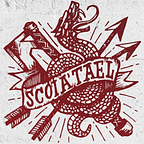Red List
of endangered species
Welcome to the start of my story about the endangered species of our -now still- green planet.
I am sure everybody has heard of the red list of endangered species, but tough I give a quick explanation:
The “Red List” or original the “Red Data Book” is a list founded by the International Union for Conservation of Nature (IUCN) in 1964 and is considered as the most comprehensive enumeration of endangered species, both flora and fauna. Based on a view criteria, like loss of space in the past 50 to 150 years, it evaluate the risk of extinction for a certain region. By putting together the three points: national long-term exposure, current development and rarity, you determine the status on the “Red List”. The different categories range from not endangered to extinct.
Altough there are more interesting criteria like the regenerability of a species, which counts a lot, I leave it at that for now.
When I thought about how I could do my part to preserve the nature I know, or I want to get to know, I realised that I can’t do anything against capitalism and the everyday evil, which are probably the greatest dangers or even main reason for the threat. What I could do is the following: I could spread the word. I could do just a little contribution by keeping in peoples mind, that were are not alone on this planet and that our survival depents on the diversity of species.
And so can you!
Nevertheless, feel free to enjoy the following first part of the series “Red List”, where I present some of the endangered species, explain why they are threatened and what we could possibly do to stop the degeneration. But please keep in mind: We’re the reason for their suffering, we’re the ones who can stop it. But therefor everybody has to contribute a little by himself. And that in turn, is only possible if everybody has the problem in mind.
Vaquitas
Let’s start the “Red List” with an animal of which there are so few, that it is hardly worth using the plural. The vaquitas, also known as California porpoises, arguably the most endangered species of mammal in the world.
Only found in the Guld of California, their population was estimated at 600 animals around 20 years ago. As of 2020, less than 20.
This whale, which, compared to other species in its family, lives in very warm waters, only mates once a year from sexual maturity and gives birth to a young. In order to reach its rather modest full size of 1.5m in length and around 50kg in weight, a vaquita feeds primarily on small fish and cephalopods, which it hunts alone or in pairs.
But “Butter bei die Fische” as we say in Germany “butter to the fish”, means something like:”get to the point”. Did we hunt down the animals on purpose or did we just destroy their habitat? In our role as a supposed alpha hunter on our planet, we of course do both. The aim of fishery is not to catch the porpoises at all, but the toboabas, a species of fish that is also threatened with extinction and is fished mercilessly becouse of its alleged effect as a miracle cure. The vaquita keeps coming into the net as bycatch and has to drown miserably for no reason.
All attempts to protect the last exemplars have more or less failed. The establishment of a protection zone only works as long as it is enforced by force, the animal perish in captivity and ban on the unse of gill nets, in which most animals drown, is not in sight. Not to mention a ban on fishing.
What can you do?
Except nothing to eat that comes from the sea? Or go ahead and hold of fisherman by yourself? Pretty little.
